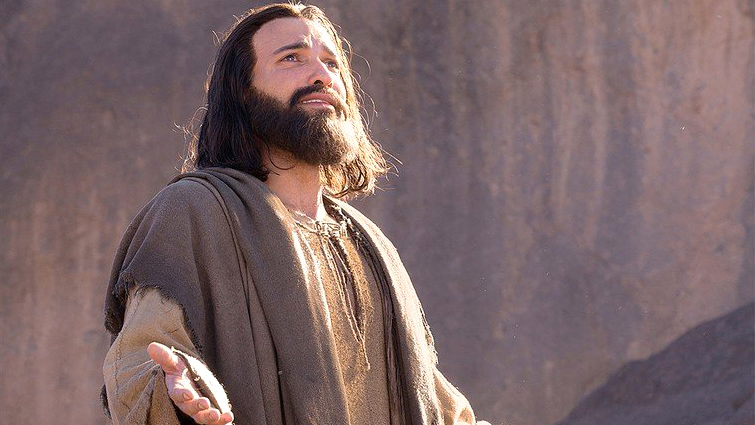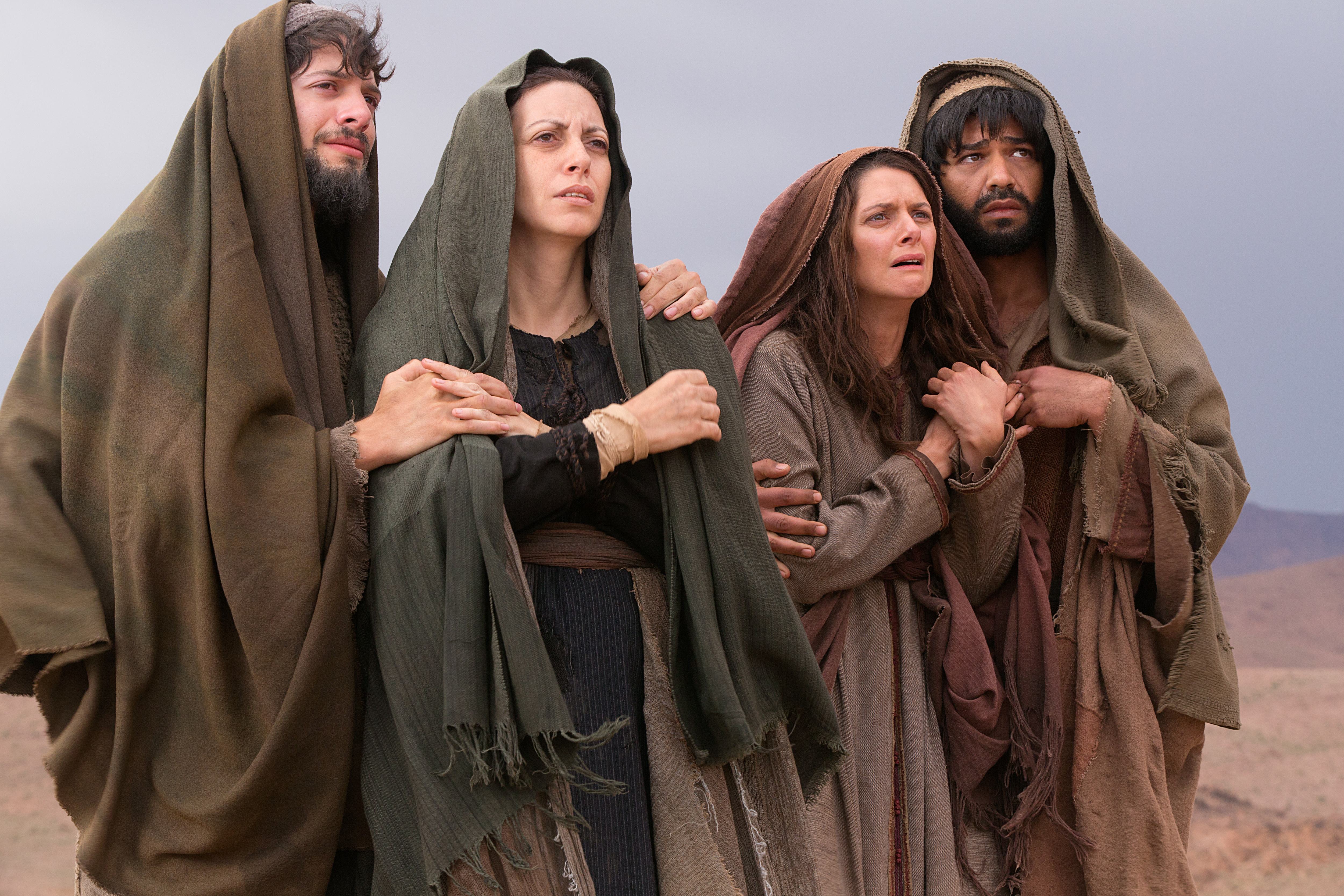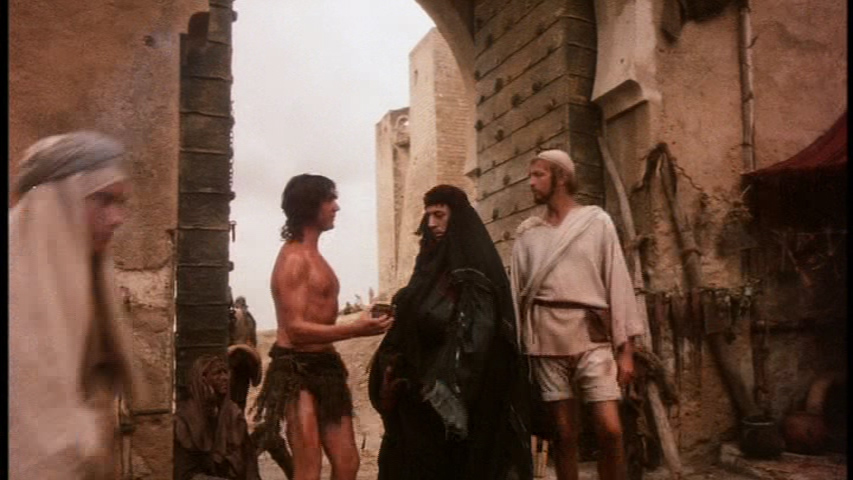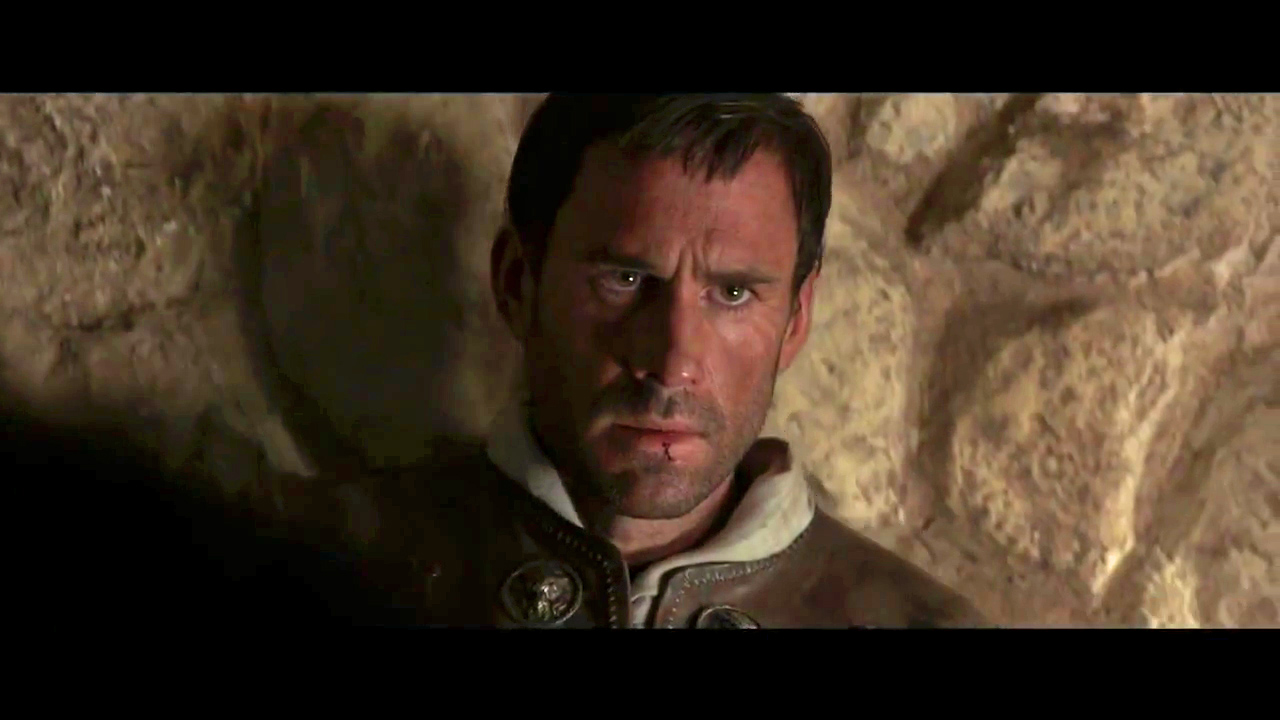Ten years ago, I compiled a list of my ten favorite Jesus movies for CT. Several new Jesus films have released since then, with more coming out this year: Risen (February 19), The Young Messiah (March 11), and a new version of Ben-Hur (August 12). But I've never felt a need to update the list. The original still holds up pretty well, I believe.
That said, while none of the newer films have nudged their way into my all-time top ten, some of them have highlighted aspects of the Gospels that most other films miss. Indeed, one of the things I value more and more, as I study this genre, is the way some films highlight aspects of the Gospels that are often overlooked—not just by other filmmakers, but also by teachers, preachers, and other Bible readers.
So I wanted to supplement my earlier list with a newer, more particular list of ten stories that usually get ignored by Jesus movies—and the (often obscure, sometimes edgier) films that have actually dramatized those stories. Here they are, in more or less biographical order.
1. The Circumcision of Jesus
On the eighth day of Christmas, Mary and Joseph had Jesus circumcised, just as all Jewish boys are (Luke 2:21). This event is significant because it underscores the humanity of Jesus. Art historian Leo Steinberg has shown that many Renaissance artists drew attention to the genitalia of the baby Jesus to emphasize the fact that God had become human even to the point of having physical gender. Not only that, this event highlights Jesus’ vulnerability. Some theologians have argued that this was the first time Jesus shed blood. So, in some sense, it marked the beginning of his sacrifice for our redemption. Finally, it underscores Jesus’ Jewishness.
The best-known film to depict this event is probably Franco Zeffirelli’s Jesus of Nazareth (1977), which makes a special point of emphasizing the Jewish rituals that Joseph and Mary would have followed and that Jesus would have been raised with. The man who performs the circumcision even declares that “this is the seal in flesh of the covenant between the Lord and his people,” which neatly sums up all three of the theological points I mentioned above. Zeffirelli’s film receives extra points for combining this story with another story that is often overlooked: Jesus’ consecration at the Temple (Luke 2:22–35), which would have happened over a month later.
More recently, a Palestinian film called The Savior (2013) also depicted the circumcision of Jesus. (Though it doesn’t show the actual procedure, it includes a close-up of the foreskin being dropped into a bowl!) Notably, this film was produced in a part of the world where circumcision is fairly common not only among Jews and Muslims, but among Christians, too.
2. The Brothers and Sisters of Jesus
The Gospels tell us that Jesus had four brothers and an unspecified number of sisters (Matt. 12:46–50; 13:55–56; Mark 3:31–35; 6:3; Luke 8:19–21; John 2:12). The Gospels also tell us that the brothers of Jesus did not believe in him during his ministry (John 7:2–10). However, the rest of the New Testament indicates that his brothers became active participants and leaders in the early church (Acts 1:14; 12:17; 15:13–21; 21:18; 1 Cor. 9:5; Gal. 2:11–13). Two of them, James and Jude, even lent their names to two of the canonical epistles.
Few films about the life of Jesus, however, have depicted his siblings—possibly because doing so would require the filmmakers to choose between the dominant Protestant, Orthodox, and Catholic traditions, which disagree on whether these siblings were the half-brothers of Jesus (i.e., the children of Mary and Joseph), the step-brothers of Jesus (i.e., the children of Joseph from a previous marriage), or the cousins of Jesus.
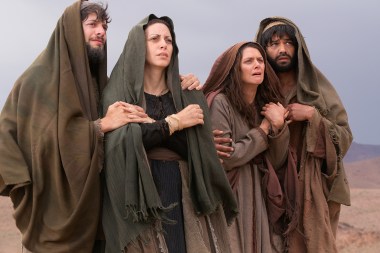 National Geographic Channel's Killing Jesus.
(photo credit: National Geographic Channels/Kent Eanes)
National Geographic Channel's Killing Jesus.
(photo credit: National Geographic Channels/Kent Eanes)There are at least three key exceptions, though. Color of the Cross (2006), which depicts Jesus and his family as black, features the brothers and sisters of Jesus in several scenes—as well as their father Joseph, who, unlike the Joseph of most other films, is still alive during Jesus’ ministry. Killing Jesus (2015), which may be the first English-language film to cast a Middle Eastern actor as Jesus, makes James a key supporting character. When I visited the film’s set in Morocco, I noticed that one of the costumes had a tag that said “Girl (Jesus’ Sister).” This apparently refers to a girl who is seen hugging Jesus in one shot, though she has no dialogue. Further, The Young Messiah (2016), which comes out in March, shows Jesus and his parents traveling from Egypt to Judea in the company of his uncle, aunt, and male and female cousins.
3. The Exorcism of Mary Magdalene
Many people believe Mary Magdalene was a prostitute before she joined the Jesus movement, but there is no basis for that in the Gospels. What the Gospels do say is that Jesus cast seven demons out of her (Luke 8:2). But this fact about her life has been ignored by most films about Jesus.
At least two major films depict her exorcism, though. Alas, one of them—The King of Kings (1927), a silent film directed by Cecil B. DeMille—depicts her as a prostitute too. And not just any; rather, a wealthy courtesan. When Jesus casts the seven demons out of her, they are identified with the Seven Deadly Sins. And the first sin to come out of Mary is Lust. But at least the exorcism is depicted.
Much better is the exorcism scene in The Miracle Maker (2000), an animated film that uses stop-motion puppets to signify the objective world—and hand-drawn animation to signify memories, visions, and states of mind. When Jesus casts the demons out of Mary in this film, the sequence begins as a seriously strange set of distorted hand-drawn images that eventually stabilize as the film moves through several styles of hand-drawn animation before fading back to the stop-motion puppets.
The History Channel miniseries The Bible (2013) almost had a scene that depicted Mary's exorcism, too, but it was deleted before the series aired. Part of it did, however, surface in a TV special called The Women of the Bible (2014) that aired on the Lifetime network.
4. Joanna, Whose Husband Worked for Herod Antipas
Luke mentions that Mary Magdalene was one of several female patrons who traveled from town to town with Jesus and the apostles. He also mentions that Joanna, one of these patrons, was married to the manager of Herod’s household (Luke 8:3).
This detail is fascinating, because Jesus and Herod did not exactly get along with each other. One would think that some dramatist might have picked up on this detail and done something with it. But until last year, none had. And then, suddenly, only a few weeks apart, Joanna popped up as a character in two TV productions that were both particularly concerned with the political implications of the Jesus movement.
In Killing Jesus, Joanna overhears a threat made against Jesus in Herod’s palace, and she tries to send him a warning. In A.D. The Bible Continues (2015), however, her Christian connections are discovered during the events of the Book of Acts, and she is executed by the Romans. All very fictitious, perhaps, but it’s exciting to see screenwriters thinking beyond the standard 12 disciples as they flesh out the Jesus movement.
5. The Syro-Phoenician Woman
This is one of the more perplexing stories in the Gospels, as Jesus not only rejects a foreign woman’s request to heal her daughter, but he seems to insult them, too, when he says, “It is not right to take the children’s bread and toss it to the dogs” (Matt. 15:21–28; Mark 7:24–30). “Children” in this case refers to the Israelites, and “dogs” refers to Gentiles like this woman).
The woman’s reply—“Yes it is, Lord. Even the dogs eat the crumbs that fall from their master’s table”—prompts Jesus to heal her daughter after all. Did Jesus always intend to heal the daughter? Was he just testing the mother’s faith? Or did he actually change his mind? Since most films have omitted this story, they have never had to answer those questions.
One miniseries, however, does tackle this story. Jesus (1999), produced as part of The Bible Collection series, emphasizes the humanity of Jesus and uses this scene to show that Jesus changing his mind. And when the disciples protest, Jesus replies, “This woman has taught me that my message is for the Gentiles, as well. If I can learn, so can you.”
6. The Ungrateful Lepers
Most Jesus films tend to flatter their audiences by showing how awestruck everyone was whenever Jesus performed a healing. Surely, we think, we would have been just as moved as they were. But the story of the ungrateful lepers—Jesus healed ten of them, and only one came back to thank him (Luke 17:11–19)—reminds us that some people were not so awestruck, or even particularly thankful.
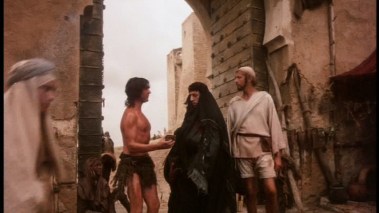
Perhaps the only major film that even alludes to this story is the Monty Python comedy Life of Brian (1979), in which an “ex-leper” begs for alms and complains that Jesus took away his “livelihood.” When Brian finally says, “There’s no pleasing some people,” the ex-leper—who, based on the way he hops and skips and flexes his arms, is clearly enjoying the use of his restored limbs—replies, “That's just what Jesus said!”
7. The Coin in the Fish's Mouth
One of the odder miracles in the Gospels concerns a tax that Jesus and his disciples were supposed to pay for the upkeep of the Temple. Jesus suggests to his disciples that, as the Son of God, he should be exempt from this tax, but, “so that we may not cause offense,” he tells Peter to pay the tax using a four-drachma coin that he will find in a fish's mouth (Matt. 17:24–27).
DeMille's The King of Kings may be the only major film to show this miracle, and it combines the story with the calling of the tax collector Matthew and with Jesus’ teaching that people should “render unto Caesar what is Caesar’s.” DeMille also gets some comedy out of the story by having two soldiers try to replicate the miracle. When one of them catches his own fish, he shakes it next to his ears, hoping to hear the rattling of coins.
8. The Plot to Kill Lazarus
The resurrection of Lazarus is one of the most famous miracles in the entire Bible and has been depicted in many films. But many people overlook the fact that the chief priests tried to have Lazarus killed, because his sudden fame was drawing too much attention to Jesus (John 12:9–11).
John doesn’t say whether the conspiracy succeeded, but at least two films—The Last Temptation of Christ (1988) and Jesus, the Spirit of God (2007), an Iranian film that tells the story of Jesus from a Muslim perspective—actually show Lazarus being killed, by Zealots in one case and by the priests in the other. And in both films, the man who delivers the fatal blow is Saul, the early persecutor of the church who eventually became the Christian missionary Paul.
9. The Two Sons of Simon of Cyrene
Three of the Gospels mention that a man named Simon of Cyrene was forced to carry the cross for Jesus. But only Mark’s gospel mentions that Simon was “the father of Alexander and Rufus” (15:21). Why does Mark, and not the other Gospels, tell us this? Tradition says Mark wrote his Gospel in Rome, and Paul’s letter to the Romans includes a greeting for a man named Rufus, whose mother was like a mother to Paul (Rom. 16:13). Is this the same Rufus mentioned in Mark? Was Mark reminding his readers that one of their own friends was the son of someone who had witnessed the Crucifixion for himself?
We don’t know, but it's fun to speculate. And two films—the silent King of Kings and The Passion of the Christ (2004)—seem to make a nod to this passage by introducing Simon in the company of one of his sons before the Romans force him to carry the cross.
10. The Doubts of Resurrection Eyewitnesses
Many Christians have wished that they could see the resurrected Jesus for themselves, and many have taken to heart what Jesus told the apostle Thomas: “Because you have seen me, you have believed; blessed are those who have not seen and yet have believed” (John 20:29). But what if actually seeing Jesus didn’t resolve one’s doubts? What if people still struggled to believe even then?
Many films have skipped the Resurrection entirely, and many others have given it only cursory treatment. So it’s not surprising that few films have explored Matthew 28:17, an enigmatic passage: “When they saw him, they worshiped him; but some doubted.” But one or two come to mind.
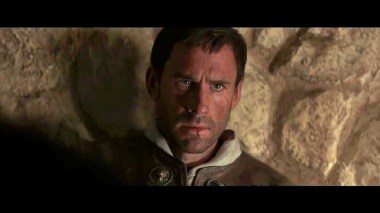
The miniseries A.D. Anno Domini (1985) hints at what this passage is getting at when Thomas is reluctant to believe in the Resurrection even after Jesus appears to him and all the other disciples (“He died on a cross,” says Thomas, using the third person even though he is looking right at Jesus). It is only after Thomas touches the wounds of Jesus that he fully believes. Similarly, the film Risen (which opened in theatres last Friday) features a non-disciple who witnesses the risen Christ and wrestles with whether to accept what he has seen.
Peter T. Chattaway writes about films in general, and Bible films in particular, at FilmChat.

